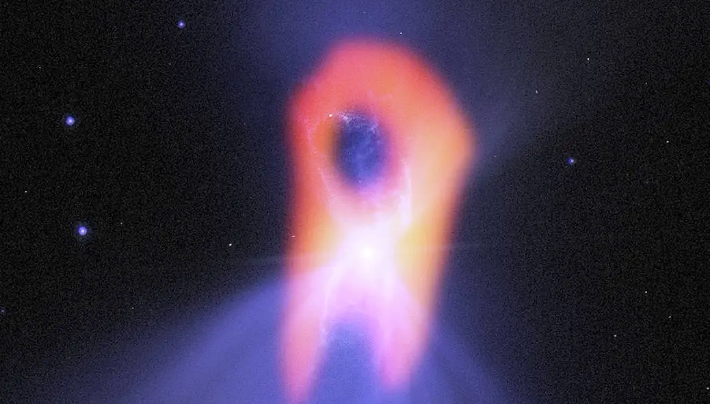The temperature of the universe is surprisingly varied, with some places far from any star being a lot hotter than you might expect, but what about the other end of the scale? Absolute zero (0 K, -273.16°C, or -459.68°F) represents a theoretical limit on how cold things can get, but what is the practical limit? How cold, then, is the coldest place in the universe?
If you want to be really pedantic there’s a very high chance that the true coldest place in the universe is inside of some alien species’ research lab, assuming someone in the universe has exceeded our technology for creating the very cold. Finding that, however, will presumably have to wait for a fair while after we make contact, since “What are the coldest conditions you have produced?” is probably not the optimum opening topic of conversation.
In terms of places humanity is aware of, we certainly haven’t seen anything natural that is as cold as what we have produced ourselves. Laser cooling followed by expansion has been used to remove so much heat from clusters of atoms that they are 0.000000000038 above absolute zero. Someone will probably continue to put more zeros between the decimal point and the first numeral, because there is a lot of important research that requires colder and colder temperatures. Still, it’s hard for most people to get to excited about dropping another trillionth of a degree.
Moreover, for most people a cloud of a few hundred exotic atoms doesn’t really count as a place. If you’re looking for something a little roomier, however, humans still probably have nature beat. If you want to study the behavior of substances such as liquid helium in substantial quantities you need to cool not just them, but their surrounding environment to temperatures a few degrees above absolute zero, and for some studies it helps to keep pushing things lower.
Ok, but say you consider that cheating. You want to know the coldest natural location. The aftermath of the Big Bang saw a superheated universe, but as it expanded it cooled, like a gas in a refrigeration cycle. The energy left over from the original explosion provides the cosmic background radiation, which, generally speaking puts a 2.7 K (-455°F) floor under temperatures everywhere. As the universe ages, this temperature will fall further, but it does so very, very slowly.
So is that the answer? Anywhere without another heat source sits at 2.7 K, making the coldest place in the universe a draw between an infinite number of places? Not that long ago we thought so, but in 1995 astronomers found something unexpected deep in the southern skies.
The Boomerang Nebula (named before we had a good image of its ghost-like shape) has a temperature of just 1 K (-458°F), causing it to absorb energy from the cosmic background around it, rather than emit it as a star’s neighborhood normally would.
This temperature has been confirmed in multiple studies, but it took 20 years to find an explanation. After all, the Boomerang is a planetary nebula, or on the way to becoming one. The name is misleading, planetary nebulae are formed when red giant stars not massive enough to explode as a supernova turn into white dwarfs instead.
The Boomerang is thought to be so cold because it is expanding ridiculously fast, but whatever is driving that expansion is not supplying much heat. A 2017 paper found evidence for the presence of an interloper star besides the one that produced the nebula in the first place. The gravitational interaction between the two is thought to be supercharging the expansion of the nebula’s gases. There may be some extra complexity to the story, but so far no one seems to have refuted the central idea.

In the right part of the spectrum, it’s not hard to see why some people think the Boomerang Nebula should be called the Ghost Nebula.
Image credit: NRAO/AUI/NSF/NASA/STScI/JPL-Caltech
Presumably the Boomerang, a relatively modest 5,000 light-years from Earth, is not the only planetary nebula where such events are taking place. In such a large universe, there’s probably a nebula driven by the same processes that is even colder. However, the Boomerang is only a few thousand years old and is already starting to warm up, so such anomalies don’t last long in cosmic terms.
There’s also another twist to the tale. If temperature is defined as the random movement of the particles that make something up, negative temperatures should be impossible. Yet, in 1949, the existence of temperatures below absolute zero was predicted.
Physicists define temperature in more than one way, including that temperature is a measure of the order within a system, with more order equating to lower temperatures. By this definition negative temperatures do exist, potentially including within the atmospheres of gas giant planets.
Certainly, if we accept these definitions, anywhere with negative temperatures outranks somewhere a degree above absolute zero. However, it’s doubtful many people would think this counts, so it looks like the Boomerang Nebula it is.
Source Link: What Is The Coldest Place In The Universe?